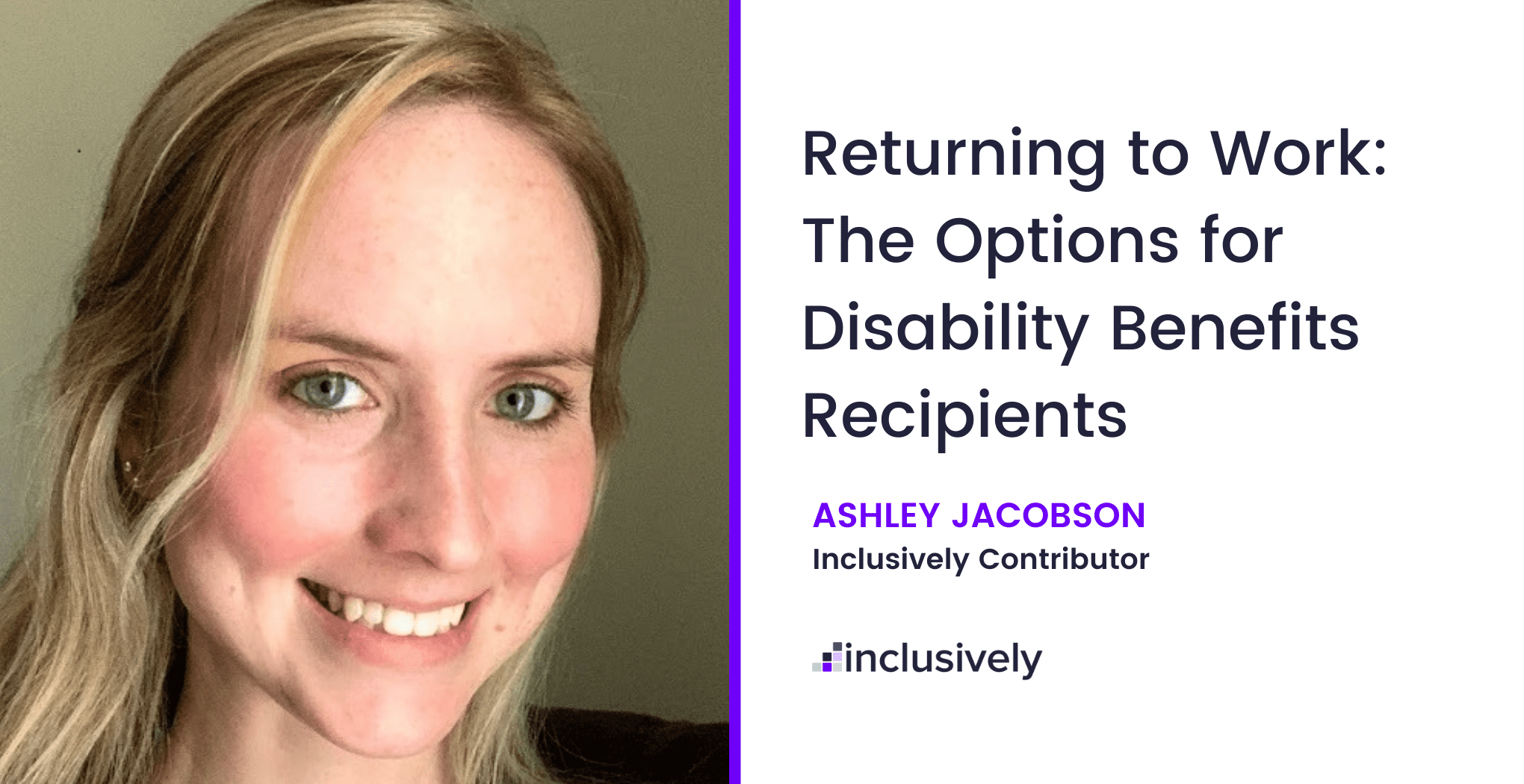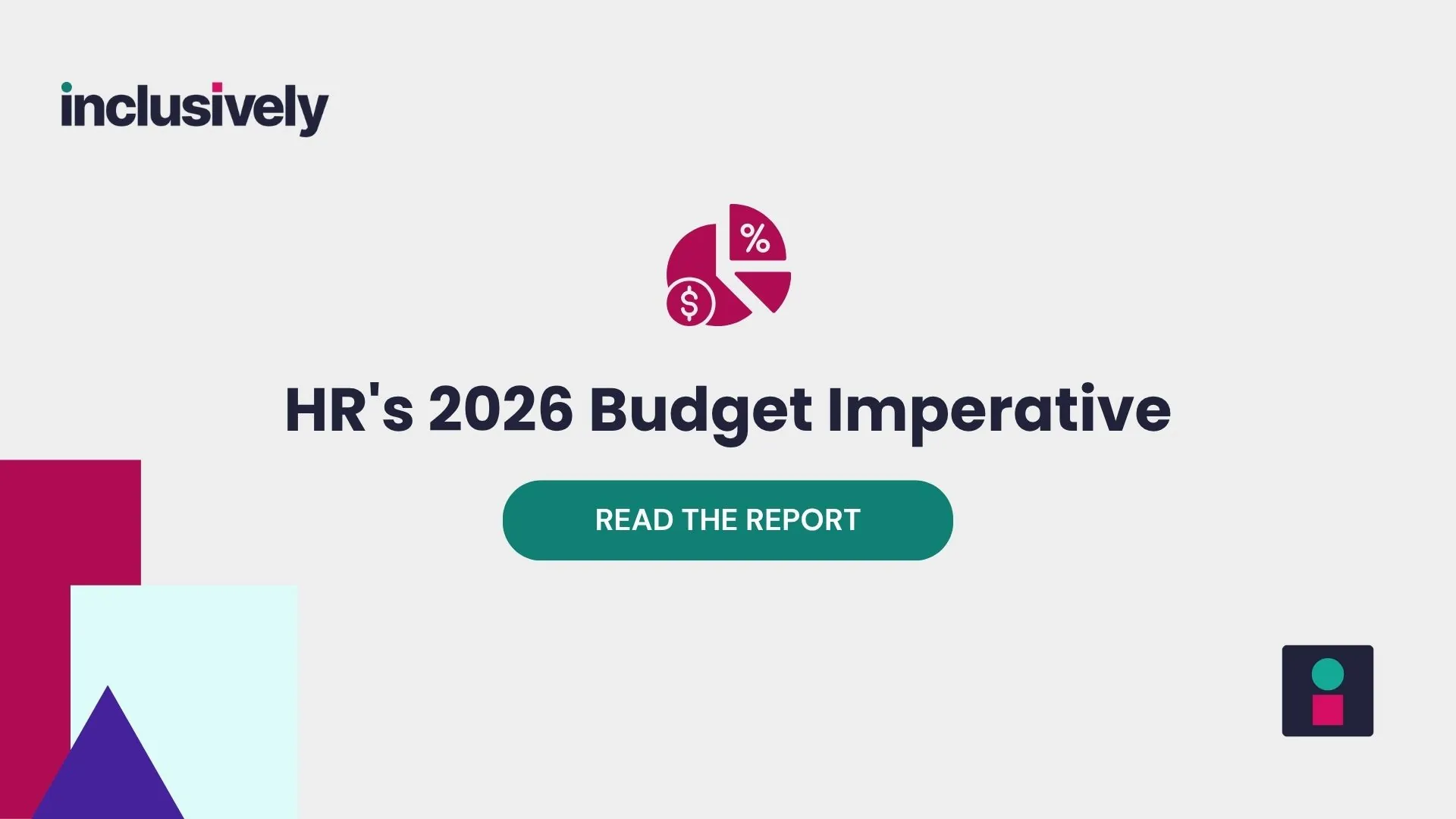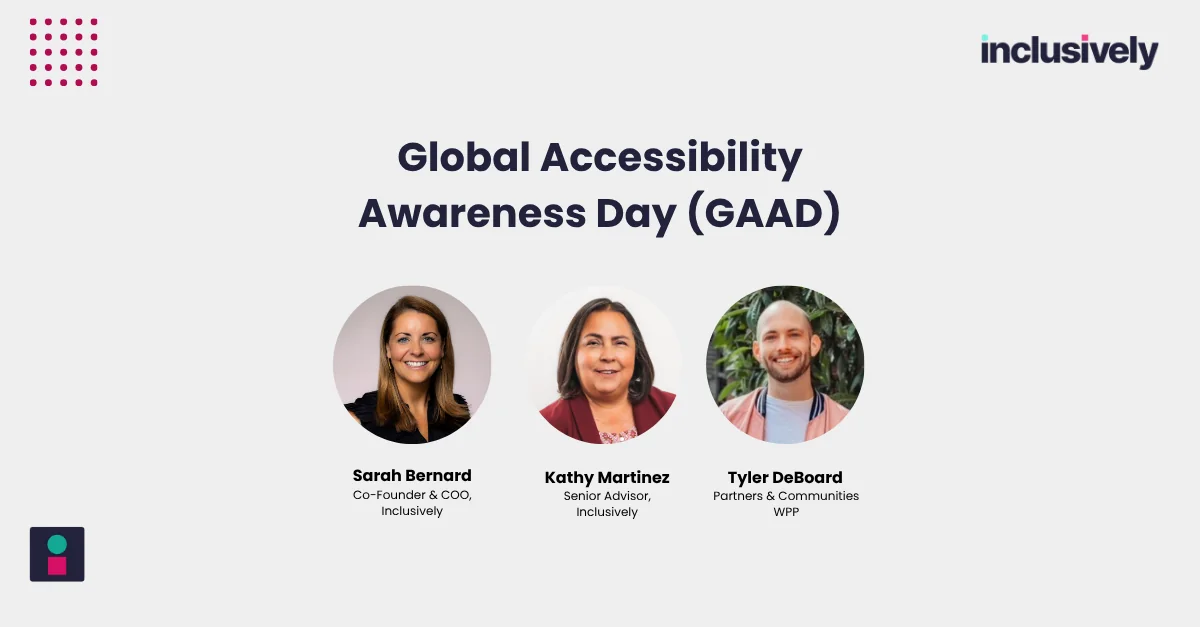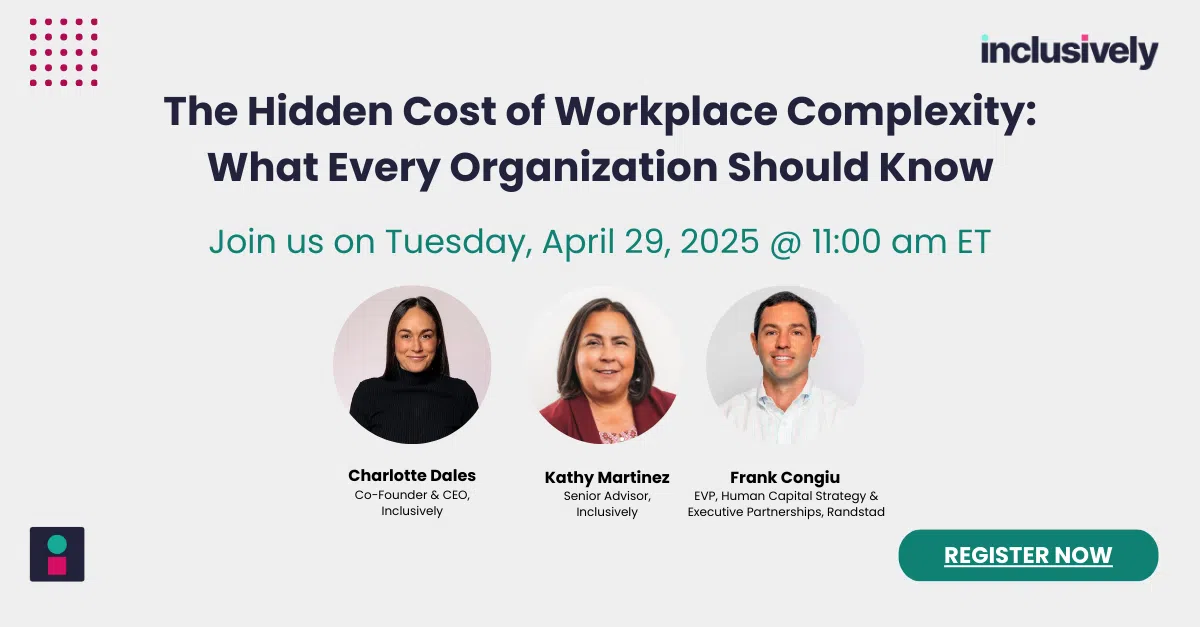How does the SSA define substantial gainful activity? Ashley Jacobson, a disability rights attorney, shares her insight on SSDI, SSI, and returning to work.
By: Ashley Jacobson
Every October during National Disability Employment Awareness Month (NDEAM), there is a meaningful push to improve the employment landscape for the disability community. Often absent from those conversations is a focus on how scary it can be for someone who has relied on vital disability benefits to risk returning to work. People can be understandably nervous to lose such benefits because of disability discrimination in the workplace and the financial cost of living disabled in the United States. However, there are options if you are interested in working but still wish to maintain some or all of those benefits in the short- or long-term future.
Disability benefits in the U.S. typically come in the form of Social Security Disability Insurance (SSDI) and Supplemental Security Income (SSI). To qualify, an individual must meet the Social Security Administration’s definition of disability. This definition is different than that of the Americans with Disabilities Act, which is why you can still be considered to have a disability and disability rights, even if you don’t receive disability benefits. The SSA generally considers one to be eligible for disability benefits if a person is unable to engage in substantial gainful activity due to an impairment that is expected to last at least one year in duration or result in death.
How does the SSA define substantial gainful activity? Each year this number changes slightly, and there is a different number for those who are blind. In 2022, you will be considered unable to engage in substantial gainful activity if you earn less than $1,350 per month for non-blind individuals, and $2,260 for those who are blind (if you’re looking for more info on the very different rules for blind individuals, you can find those here: Social Security – The Red Book – Special Rules for Individuals Who Are Blind (ssa.gov)_).
One way to think about SSDI is like an insurance policy you pay into, for when you need it. You might qualify for SSDI by having a history of working, where you earn up to 4 work credits each year that you work. Typically, people qualify by having around 40 work credits with 20 of those credits earned in the 10 years before you acquire disability. However, there are other ways younger workers might qualify, even if they have less than 40 work credits. The amount of money you receive under SSDI can be up to $3,148 in 2021. SSDI also allows people to become eligible for Medicare health insurance coverage after approximately 2 years, except for those with some disabilities (like ALS) that might require care sooner.
SSI is a bit different, in that it’s not based on work history but financial needs (you are only allowed $2,000 in countable assets for an individual and $3,000 for a married couple). Countable assets are almost everything except one car, one home, household goods and personal effects, property used in a business, money set aside in a PASS account, up to $100,000 in an ABLE account, certain life insurance policies, some prepaid funeral/burial contracts, and assets in certain trusts.
For 2022, the monthly maximum a person will receive through SSI is $841 per month. If the person’s spouse is also eligible for SSI, the couple can receive $1,261 per month. Some states supplement SSI benefits, and your benefit amount can be reduced by resources you receive during the month from other sources, perhaps money from family, or income from others that provides for your food and shelter. Some trusts can help you maintain assets and still receive SSI and other government benefits, and those options should be put in place as soon as possible if you think you’ll likely be on disability benefits in the future and might want to work.
It’s important to note the trauma and delays many disabled people experience when applying for disability benefits—a process that, with appeals, could take years. They have to disclose intimate medical and work documentation, seek the opinion of medical providers, vocational rehabilitation counselors, judges, and attorneys. The SSA also completes a review of eligibility every 3, 5, or 7 years depending on a person’s disability and the likeliness of “recovery.”
For most individuals, they face this scrutiny after already facing discrimination in the workplace. So, it’s not surprising that many are terrified of losing these benefits and having to start over—but you may have more options than you think.
Under SSDI and SSI, there are work incentives in place to encourage disabled people to try working without fear of losing benefits right away (or at all). For SSDI recipients specifically, there is a trial work period, which could allow you to receive full benefits and try working again. Trial work periods are basically measured in months—if you work for 9 months (it doesn’t have to be 9 months in a row) in a 60-month period, you can still receive SSDI during that time.
If you work for those 9 months, and that work is considered at the substantial gainful activity level, then your SSDI will end—but, if your earnings later drop below that amount ($1,350 per month for non-blind individuals or $2,260 for blind individuals), SSA can automatically reinstate disability benefits without you having to reapply. This reinstatement period lasts for 36 months after your trial work period.
However, the loss of financial benefits may not be your only concern. For a lot of disabled people, the loss of Medicare coverage previously provided to them under SSDI might be the scariest aspect of losing these benefits—especially when many workplaces hiring disabled or nondisabled talent are not providing health insurance benefits. The good news here is that after your trial work period, most people will still receive at least 93 consecutive months of Medicare Part A, Part B (if enrolled), and Part D (if enrolled). No premium will need to be paid for the Part A coverage, and after that 93-month coverage period ends, people may pay for Medicare coverage as long as they continue to have disabilities. There are also some state-level Medicare savings programs for which you might be eligible.
Vocational rehabilitation programs are federally-mandated programs where people with disabilities receive counseling and assessment services to help them return to work, and address accommodations and accessibility. If you receive SSDI and participate in a vocational rehabilitation or similar program, you could try returning to work, and still receive Section 301 incentive payments. SSDI and Medicare continue while in the program, and people who receive SSI can also participate and receive these payments.
Something else to consider is that the SSA might deduct the cost of impairment-related work expenses from your income calculations when determining eligibility for disability benefits. If the SSA sees you are working, but you pay for specific transportation costs or equipment for work, those costs may be deducted from the calculations and help you stay eligible.
Another incentive to return to work is a Plan to Achieve Self-Support (PASS). This is typically provided to those who receive or qualify for SSI. PASS is a plan that allows disabled individuals to use income and resources to reach a work goal, during which your money or resources set aside under a PASS go into a PASS account. This would allow a person to still receive an SSI check of around $700-800 per month.
The Student Earned Income Exception, is an incentive where a person younger than 22 years old and regularly attending school can receive up to $1,930 of earned income per month without affecting their SSI payment up to around $7,770 in 2021.
Perhaps you try working, and you reach the point where you earn enough income for your SSI cash benefit to be reduced to $0. Under the Section 1619(a) and (b) incentives, you can still receive Medicaid until you reach your state’s Medicaid threshold. Each state amount is different, but can be found here: https://secure.ssa.gov/apps10/poms.nsf/lnx/0502302200).
SSI also has a reinstatement period, which is within 12 months of loss of eligibility, where you can reinstate SSI cash payments or Medicaid coverage without a new application.
These incentives and reinstatement period options for disability benefits mean that someone can test the waters—they can try to work, with the safety nets in place in case they need to maintain or go back on benefits. For some, benefits become unnecessary with proper accessibility and inclusion measures in workplaces, empowered by companies like Inclusively, which connects disabled talent with employers already on board to accommodate and benefit from the contributions of disabled employees.
If you are interested in finding a job and have a disability, check out Inclusively.com and connect with other disabled talent and employers through the Inclusively Community Portal, created for their network of job seekers, employers, and partners to discuss disability employment topics, share ideas, and engage. It is also recommended to seek the advice of an attorney in your area who specializes in disability benefits, because the rules and incentives may change in the future.
About Ashley
Ashley Jacobson is a disability rights attorney and accommodations specialist living with physical disability in the state of Michigan. Through her law firm, Jacobson Law & Advocacy, she protects the rights of clients with disabilities in workplaces, schools, courtrooms, and communities. Ashley also owns and operates Adaptive Inclusion, a nationwide disability counseling and consulting firm, utilizing her master’s degree and certification in disability counseling and assessment (CRC).
Ashley is a published writer and has served on several panels discussing disability in the workplace, adapting to disability, and disability rights. With professional expertise and empathy informed by personal experience, her mission is to empower disabled individuals and advocate for a more equal, inclusive, and accessible future.
More information about Ashley can be found at AdaptiveInclusion.com and JLAPLLC.com. Ashley is also on Instagram and TikTok (@ashleybjacobson) and Facebook (@JLAfirm).
How Inclusively Works
Inclusively’s accessible employment platform and job matching technology goes beyond traditional search criteria and allows candidates to connect with opportunities that match their experience, skills, and workplace accommodations – called Success Enablers. Some examples include screen readers, noise-canceling headphones, an emotional support animal, accessible parking and entrances, braille signage, and dozens more.



